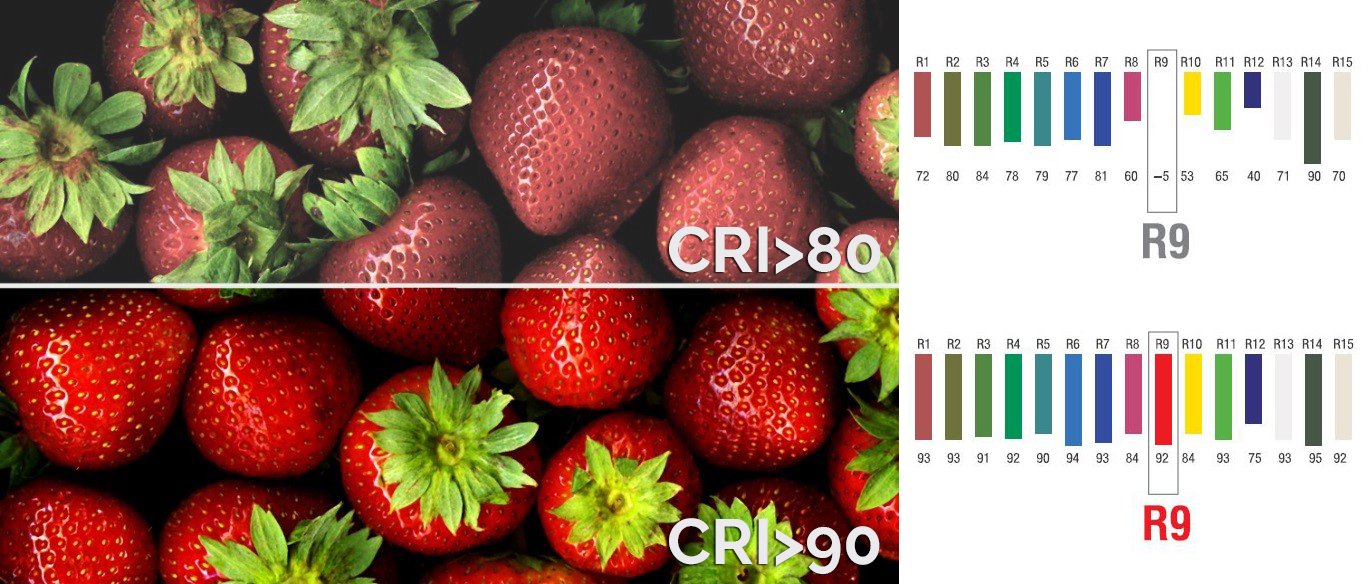
If you've ever considered choosing the right lighting for your home or workspace, you've probably come across the acronym "CRI" or "color index." CRI, or Color Rendering Index, is a key parameter influencing how we perceive colors under a given light.
CRI is a measure that evaluates a light's ability to display colors compared to sunlight, which serves as a reference point with a maximum CRI value of 100. The CRI value ranges from 0 to 100, where a higher number indicates better color reproduction.
To better understand: Light with a CRI of 0 would make color recognition virtually impossible, while a light with a CRI of 100 would perfectly capture colors as they are in reality. Regular LED products usually have a CRI of around 80, but Kama Lights offer a CRI>90 for some products is up to 95. High CRI and R9 values can be found, for example, in our LED panels, spotlights, LED strips and bulbs. A higher CRI plays a key role in areas where accurate color reproduction is crucial, such as art, design, culinary, or medicine. Lower CRI values can cause color distortion and lead to incorrect decisions.
CRI is judged by the fullness of the radiated spectrum. The determination of CRI is defined by the International Commission of Illumination (CIA), where 14 colors of the scale are defined, China has added one more color to the definition of the spectrum, namely R15 - this is the average skin color of an Asian woman. Basically, the CRI is determined from 8 colors from the R1 - R8 spectrum, the value then indicates the so-called "typical CRI". The value of the colors R9 - R15 indicates the so-called "Special CRI". If we make an average of the color measurement values R1 - R8, we get the so-called "Average CRI" or Ra. You can see the individual colors below on the scale, these are the colors R1 to R15.

Currently, manufacturers are focusing a lot on the color values of R9 - Saturated (dark) red. Simply put, the higher the value, the better the light is able to reproduce the rich red color, which is very important for the correct reproduction of the colors of fruits, flowers and other animal products.
A low CRI(Ra) value results in the following when living and working under artificial lighting:
- distorted perception of distance in an illuminated space,
- greater fatigue, headache, eye strain,
- higher error rate, lower concentration at work,
- greater risk of health problems in sick people,
- poorer spatial orientation when moving faster or under higher stress load,
- distorted perception of the colors we see in the spectrum of the light source (implausible perception of the ratio of brightness to shade of colors),
- distorted perception of color contrasts.
CRI can be a decisive factor when choosing lighting. Make sure that the light you use in the space allows the colors to look as natural as possible, thus avoiding distortion and color inaccuracies.
